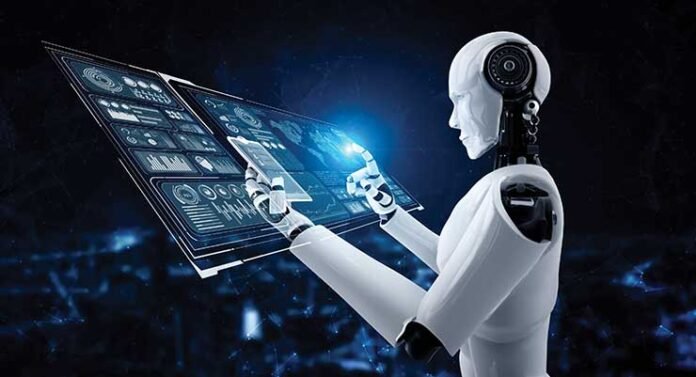Artificial Intelligence (AI) is not just a fancy tech tool anymore; it’s a real force for change in our society. For India, a country with diverse challenges and tons of opportunities, AI offers a huge chance to tackle some serious development problems while we work towards the United Nations Sustainable Development Goals (SDGs). If we can get AI working within our governance and how we develop as a nation, we could build a future that’s good for everyone and the planet. But, let’s be honest, getting there means dealing with some pretty big gaps in infrastructure, policy, and actually getting things done.
AI: A Catalyst for Sustainable Development
One of AI’s superpowers is its ability to handle massive amounts of data, automate decision-making, and give us insights we can actually use. This makes it a key player in achieving the SDGs. It’s useful in all sorts of areas, from farming and healthcare to education and protecting the environment.
For example, AI has been a total game-changer in tackling poverty and hunger. AI-powered tools help us use resources more effectively in welfare programs and identify the people who are most at risk so we can give them targeted help. In agriculture, precision farming, which uses AI, has allowed farmers to make smarter, data-driven decisions about how they manage their crops, control pests, and use irrigation. Programs like the National Agriculture Market (eNAM) have benefited from AI, helping farmers get better prices for their products and cutting down on food waste.
Even with these advancements, there are still challenges. Many small and marginal farmers don’t have access to the digital stuff or affordable tools they need to use AI solutions. While initiatives under the Digital India program have made some progress, rural areas still need way more investment in getting connected and learning how to use digital technology. If we can empower these farmers with AI-enabled tools and training, we can seriously boost how much they produce and make real progress on the SDGs related to poverty and hunger.
Revolutionising Healthcare and Education
Healthcare in India, especially in rural areas, has always struggled with getting to people and giving them quality care. AI is now playing a big part in fixing these problems. From spotting diseases early and improving how we diagnose them to using telemedicine and managing resources better, AI is changing the whole healthcare scene. Platforms like Ayushman Bharat and eSanjeevani have already started using AI to improve how they deliver services, making sure healthcare reaches even the most remote parts of the country.
In agriculture, AI-powered precision farming is boosting productivity and reducing waste. In healthcare, AI is improving diagnostics, expanding access to care through telemedicine, and optimising resource allocation. In education, personalised learning platforms are bridging the digital divide and providing more equitable opportunities
However, the lack of good healthcare infrastructure in rural areas limits how far AI technologies can reach. While telemedicine platforms are promising, inconsistent internet and not enough trained people to run the AI systems are major obstacles. To really use AI’s potential, we need to invest more in healthcare infrastructure, improve internet access, and create training programs for healthcare workers.
In education, AI is changing how learning is delivered and how we access it. Personalised AI-driven learning systems adapt to each student’s individual needs, ensuring that students in rural or underserved areas can get the same quality of education as those in urban areas. Platforms like DIKSHA are playing a big role in closing the digital divide, offering resources in local languages and promoting digital literacy.
Even with these improvements, the digital divide is still a problem. Many schools in rural areas don’t even have basic digital infrastructure, which means they cannot use AI-powered solutions. Expanding broadband access and helping underserved communities get affordable digital devices is essential if we want everyone to benefit from AI in education.
Addressing Environmental and Urban Challenges
AI is also at the forefront of efforts to fight environmental damage and promote sustainable urban development. With air pollution being a huge health and environmental risk, AI-driven air quality monitoring systems are providing real-time data and actionable insights to help us reduce pollution. Initiatives like the National Clean Air Programme (NCAP) are using AI to find pollution hotspots and suggest targeted actions.
In the energy sector, AI’s role in optimising how we produce and distribute renewable energy is crucial for achieving the goals of affordable and clean energy under SDG 7. Predictive analytics and smart grids powered by AI are helping India move to renewable energy sources more efficiently.
Urban development is also getting a boost from AI, especially through the Smart Cities Mission. AI-powered solutions are improving how we manage traffic, dispose of waste, and plan our cities, making them more sustainable and better places to live. However, these benefits are often limited to major metropolitan areas, leaving smaller cities and towns behind. Expanding the Smart Cities Mission to include smaller urban centres and semi-urban areas is essential for achieving fair urban development.
Challenges Hindering AI’s Full Potential
While AI’s potential is clear, there are several obstacles to its adoption in India. One of the biggest is the digital divide. Rural and underserved areas often lack reliable internet and affordable digital devices, which limits how far AI solutions can reach. Bridging this divide means continuing to invest in infrastructure and formulating targeted policies to make sure everyone benefits from AI.
Another big hurdle is the skills gap. A large part of India’s workforce is not ready for the demands of an AI-driven economy. Programs like Skill India and the Responsible AI for Youth initiative are trying to address this, but they need to be scaled up significantly. Working with industry leaders can help create training programs that teach the skills people actually need in the job market, making sure India’s workforce is ready for the future.
Ethical concerns around AI, including data privacy, biased algorithms, and accountability, also need our attention. While India has laid out some ethical guidelines for AI, not having a strong regulatory framework is problematic. Creating clear and enforceable policies on data protection and ethical AI use is crucial for building trust and ensuring AI is used responsibly.
The digital divide, skills gaps, and ethical considerations surrounding AI deployment must be tackled strategically. Continued investment in infrastructure, targeted training programs, and robust policy frameworks are essential to ensuring that AI benefits all segments of Indian society and contributes effectively to achieving the SDGs
Strengthening Government Initiatives and Innovation Ecosystems
India has made good progress in using AI for sustainable development through initiatives like the India AI Mission, the National AI Portal (INDIAai), and the Responsible AI for Youth program. These initiatives focus on encouraging innovation, building AI skills, and getting different sectors to use AI. Programs like the National Clean Air Programme (NCAP) and Faster Adoption and Manufacturing of Hybrid and Electric Vehicles (FAME) show how AI is being used to tackle environmental problems and promote cleaner transportation.
However, we need to do more. We need to invest more money in AI research, encourage more people to use AI in underserved areas, and get the government and private sector to work together. Also, we need to support early-stage startups in smaller cities with targeted support and incentives, which can lead to local innovation and solutions for unique regional problems.
Charting a Path Forward
AI is not just a piece of technology; it is a powerful tool for change that can help India solve its biggest problems and make progress toward the SDGs. From improving farming and healthcare to fighting pollution and making education more inclusive, AI’s potential is huge. But for India to really make the most of it, the government needs to address the gaps in infrastructure, skills, and policy.
By using AI strategically, tackling the challenges we face, and encouraging innovation, India can not only achieve its SDG targets but also show the world how technology can be a force for good. With the right focus, investments, and policies, AI can become a cornerstone of India’s efforts to improve millions of lives and build a brighter, more sustainable future.
-The writer is an Indian Army veteran. Post-retirement, transitioning into senior leadership roles across the corporate, government, and academic sectors, he headed defence programmes at Larsen & Toubro, served as Chief of Staff in key Union ministries, and was the Director of Technology Verticals at Rashtriya Raksha University (RRU). He also served as the Managing Director of two defence tech-focused incubators, fostering innovation at the intersection of national security and emerging technologies. An alumnus of IIT Delhi and the Defence Services Staff College (DSSC), he is a recognised expert in cybersecurity, artificial intelligence, and national security strategy. He is currently the CEO of Rathon AI and an advisor at ThorSec Global, a strategic security consultancy.






